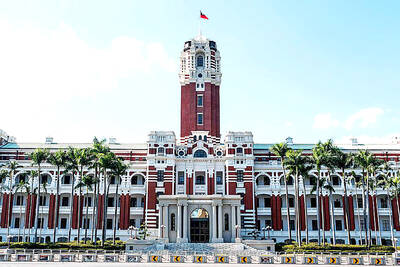Asians and North Americans may really see the world differently.
Shown a photograph, North American students of European background paid more attention to the object in the foreground of a scene, while students from China spent more time studying the background and taking in the whole scene, researchers at the University of Michigan say.
Researchers led by Hannah-Faye Chua and Richard Nisbett tracked the eye movement of the students -- 25 European Americans and 27 native Chinese -- to determine where they looked in a picture and how long they focused on a particular area.
"They literally are seeing the world differently," said Nisbett, with Westerners focusing on objects and Asians taking in more context to view a scene holistically.
He believes the differences are cultural.
"Asians live in a more socially complicated world than we do," he said. "They have to pay more attention to others than we do. We are individualists. We can be bulls in a China shop, they can't afford it."
The key thing in Chinese culture is harmony, Nisbett said, while in the West the key is finding ways to get things done, paying less attention to others.
And that, he went on, goes back to the ecology and economy of thousands of years ago.
In ancient China farmers developed a system of irrigated agriculture, Nisbett said, in which farmers had to get along with each other to share water and make sure no one cheated. This is especially the case in rice farming, he said.
Western attitudes, on the other hand, developed in ancient Greece where more smallholders ran individual farms, raising grapes and olives, and operating like individual businessmen.
Thus, differences in perception go back at least 2,000 years, he said.
Aristotle, for example, focused on objects. A rock sank in water because it had the property of gravity, wood floated because it had the property of floating. He would not have mentioned the water. The Chinese, though, considered all actions related to the medium in which they occurred, so they understood tides, they understood magnetism, long before the West did.
He illustrated this with a test asking Japanese and Americans to look at pictures of underwater scenes and report what they saw.
Americans would go straight for the brightest or most rapidly moving object, he said, such as three trout swimming.
The Japanese were more likely to say they saw a stream, the water was green, there were rocks on bottom and then mention the fish.
The Japanese gave 60 percent more information on the background than the Americans and twice as much about the relationship between background and foreground objects, he said.
In the latest test, the researchers tracked the eye movement of the Chinese and Americans as they looked at pictures.
The Americans looked at the object in the foreground sooner -- a leopard in the jungle, for example -- and they looked at it longer. The Chinese had more eye movement, especially more eye movement in the background and back and forth between the main object and the background, he said.
"The Americans are seeing an object and explaining behavior in terms of the object and the Chinese are seeing the context more," Nisbett said.
Reinforcing the belief that differences are cultural, he said, was the finding that when they study Asians raised in North America, they lie between native Asians and European-Americans, and are sometimes closer to Americans, in the way they view scenes.
Kyle Cave of the University of Massachusetts at Amherst said: "These results are particularly striking because they show that these cultural differences extend to low-level perceptual processes such as how we control our eyes. They suggest that the way that we see and explore the world literally depends on where we come from."
Cave said researchers in his lab have found differences in eye movement between Asians and Westerners in reading, based on differences in the styles of writing in each language.
However, Cave added, Nisbett's results are consistent with the idea that the difference is cultural.
"What they are finding seems likely to be more than just differences from reading," he said.
"When you look beyond this study to all of the studies finding cultural differences, you find that people from one culture do better on some tasks, while people from other cultures do better on others. I think it would be hard to argue from these studies that one culture is generally outperforming the other cognitively," Cave said.

The CIA has a message for Chinese government officials worried about their place in Chinese President Xi Jinping’s (習近平) government: Come work with us. The agency released two Mandarin-language videos on social media on Thursday inviting disgruntled officials to contact the CIA. The recruitment videos posted on YouTube and X racked up more than 5 million views combined in their first day. The outreach comes as CIA Director John Ratcliffe has vowed to boost the agency’s use of intelligence from human sources and its focus on China, which has recently targeted US officials with its own espionage operations. The videos are “aimed at

STEADFAST FRIEND: The bills encourage increased Taiwan-US engagement and address China’s distortion of UN Resolution 2758 to isolate Taiwan internationally The Presidential Office yesterday thanked the US House of Representatives for unanimously passing two Taiwan-related bills highlighting its solid support for Taiwan’s democracy and global participation, and for deepening bilateral relations. One of the bills, the Taiwan Assurance Implementation Act, requires the US Department of State to periodically review its guidelines for engagement with Taiwan, and report to the US Congress on the guidelines and plans to lift self-imposed limitations on US-Taiwan engagement. The other bill is the Taiwan International Solidarity Act, which clarifies that UN Resolution 2758 does not address the issue of the representation of Taiwan or its people in

US Indo-Pacific Commander Admiral Samuel Paparo on Friday expressed concern over the rate at which China is diversifying its military exercises, the Financial Times (FT) reported on Saturday. “The rates of change on the depth and breadth of their exercises is the one non-linear effect that I’ve seen in the last year that wakes me up at night or keeps me up at night,” Paparo was quoted by FT as saying while attending the annual Sedona Forum at the McCain Institute in Arizona. Paparo also expressed concern over the speed with which China was expanding its military. While the US

SHIFT: Taiwan’s better-than-expected first-quarter GDP and signs of weakness in the US have driven global capital back to emerging markets, the central bank head said The central bank yesterday blamed market speculation for the steep rise in the local currency, and urged exporters and financial institutions to stay calm and stop panic sell-offs to avoid hurting their own profitability. The nation’s top monetary policymaker said that it would step in, if necessary, to maintain order and stability in the foreign exchange market. The remarks came as the NT dollar yesterday closed up NT$0.919 to NT$30.145 against the US dollar in Taipei trading, after rising as high as NT$29.59 in intraday trading. The local currency has surged 5.85 percent against the greenback over the past two sessions, central